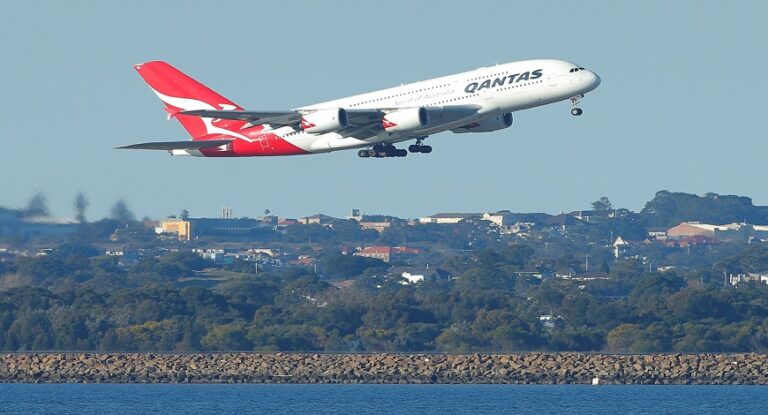
SYDNEY (Reuters) – Qantas Airways Ltd said it had pushed back its target for a widespread resumption of international travel from Australia by four months until the end of October, when the country’s vaccination programme is expected to conclude.
The airline grounded its international fleet last March and a domestic recovery has been hampered by state border closures, leading to a 75% fall in revenue to A$2.33 billion ($1.9 billion) in the six months to Dec. 31.
Qantas on Thursday said it swung to a A$1.03 billion first-half underlying loss before tax, its most closely watched financial measure, compared with a A$771 million profit a year earlier.
Its shares rose as much as 5% in early trading to the highest levels since December, with Jefferies analyst Anthony Moulder citing the airline’s strong cash flow and liquidity.
Qantas Chief Executive Alan Joyce said it was in close consultation with the Australian government about the outlook for resuming international flights.
“If things change, so will our dates,” Joyce told reporters. “But with the vaccine rollout already underway, we’re on the right track and that October date seems sensible and in some ways conservative.”
Australia on Sunday began vaccinating its citizens against COVID-19, having had just under 29,000 infections and 909 deaths since last March, lower than most comparable countries.
Qantas previously placed international tickets on sale from July 1, but has pushed that back to Oct. 31, with the exception of flights to New Zealand.
Joyce said Qantas was forecasting international capacity would be only 40% of pre-COVID levels in the 2022 financial year, and a full recovery was not expected until 2024, in line with global estimates.
Qantas has said it will require international travellers to be vaccinated in order to board flights.
In the domestic market, where Qantas normally earns the bulk of its profit, capacity has been running well below pre-pandemic levels due to state border closures that it expects will cost A$350 million to A$450 million of earnings before interest, tax depreciation and amortisation in the second half.
The airline forecasts it will operate 80% of its usual domestic capacity in the fourth quarter ending June 30, up from 60% in the third quarter.
Both Qantas and its low-cost brand Jetstar were cash positive in the first half of the financial year in the domestic market, the airline said.
Qantas had A$4.2 billion of liquidity as of Dec. 31 to help it weather ongoing uncertainty in market conditions.





